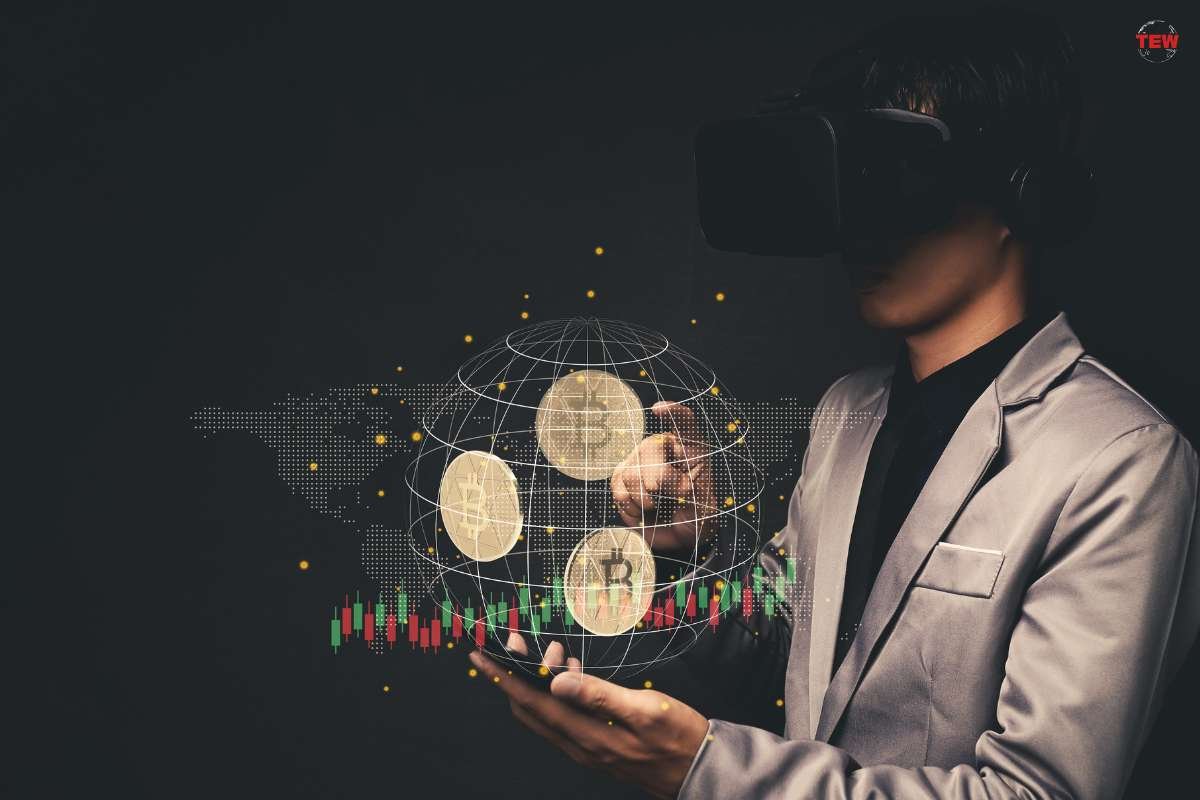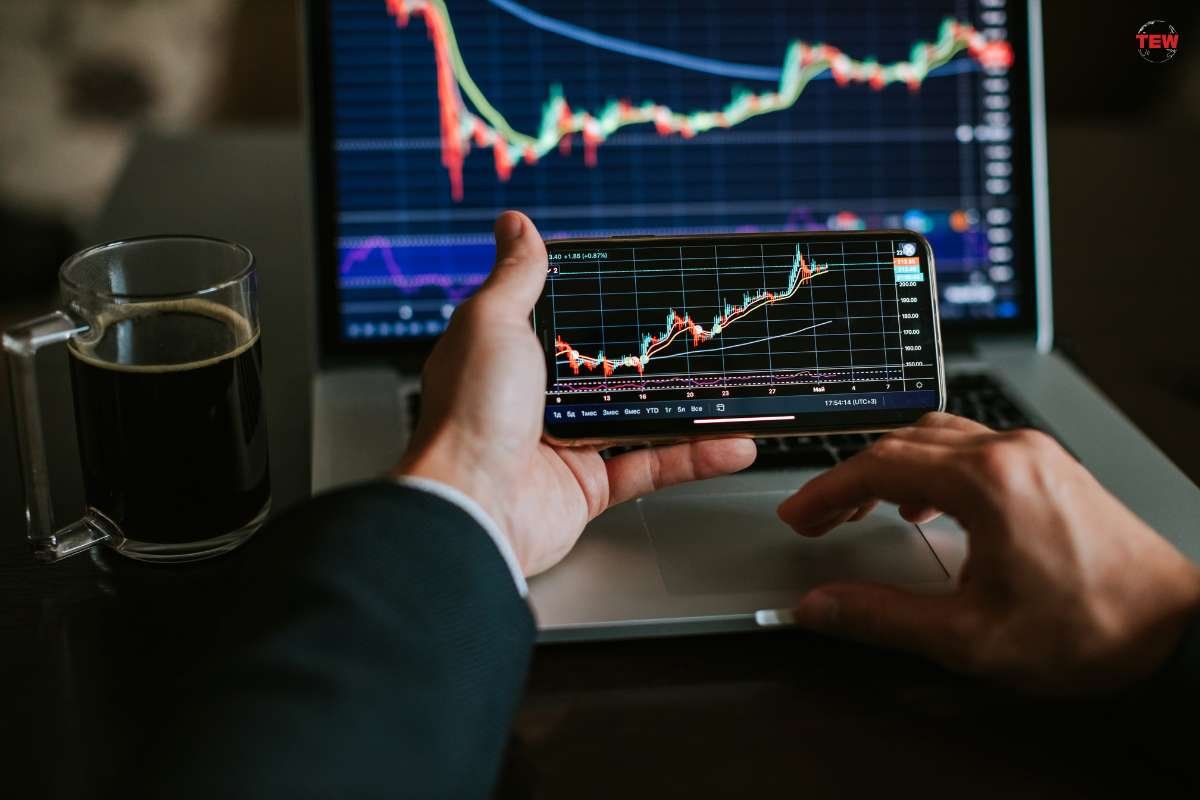Understanding Algorithmic Futures Trading
In the rapidly evolving world of trading, algorithms have taken centre stage. Welcome to algorithmic futures trading, a contemporary strategy that utilises computer programmes to follow defined instructions for placing trades. This method, also termed ‘Algotrading’, has grabbed significant attention in the financial markets due to its speed and precision – attributes paramount in today’s crypto markets.
The blog will elucidate the intricacies of this automated process while highlighting various types of strategies used for executing orders swiftly and effectively. Furthermore, we’ll delve into how it relates to futures contracts and unravel its practical implications in real-world scenarios.
Key Takeaways
- Algorithmic futures trading, also known as algo-trading or automated trading, is a strategy that uses pre-programmed algorithms to execute trades in the futures market.
- Algorithmic futures trading offers several advantages, including speed and accuracy in trade execution, the ability to backtest and refine strategies using historical data, and optimal entry and exit point identification based on predetermined parameters.
- There are various types of algorithmic trading strategies used in the world of crypto trading, such as trend-following strategies, mean reversion strategies, arbitrage strategies, breakout strategies, scalping strategies, news-based strategies, and statistical arbitrage strategies.
- Algorithmic futures trading software plays a crucial role in executing trades efficiently and accurately while removing emotional biases from decision-making processes. It allows traders to test and refine their algorithms and adapt to changing market conditions for better performance.
Basics Of Algorithmic Trading

Algorithmic trading, also known as algo trading or automated trading, is a powerful strategy used in futures trading to execute trades based on pre-defined rules and algorithms.
Defining Algorithmic Trading And Its Significance In Futures Trading
Algorithmic trading, often referred to as ‘algo-trading’ or ‘black box trading’, is a method of executing orders using automated pre-programmed instructions. These instructions, based on variables such as timing, price and volume, are powered by high-speed computers that can make thousands of trades per second.
In the context of futures trading – where traders speculate on the future price of assets like commodities or cryptocurrencies– algorithmic strategies play an indispensable role. One key reason is time efficiency; algorithms operate at a much faster rate than any human trader could achieve manually, enabling them to respond instantly to changing market conditions and execute trades almost without delay.
Consider our crypto traders who engage in Bitcoin futures contracts for instance. They bet on whether Bitcoin’s value will rise or fall by a certain date in the future. Algo-trading here allows quick response to volatile market movements thereby optimising entry and exit points while reducing chances of human error or emotional bias inherent in manual transactions.
Advantages And Benefits Of Algorithmic Futures Trading
In the world of crypto trading, algorithmic futures trading has emerged as a powerful tool that offers several advantages and benefits. Firstly, it provides traders with the ability to execute trades swiftly and accurately, removing any emotional biases that can often lead to poor decision-making.
Another significant advantage is the ability to backtest and refine trading strategies. Algorithmic trading software allows traders to test their strategies using historical data, enabling them to identify patterns and optimize their approach. Moreover, algorithmic futures trading excels at identifying optimal entry and exit points based on predetermined parameters.
For example, imagine you’re a crypto trader who wants to hedge against price fluctuations in Bitcoin futures contracts. With algorithmic futures trading software by your side, you can create sophisticated hedging strategies that automatically adjust positions based on market conditions.
Overall, algorithmic futures trading empowers crypto traders by offering speed, accuracy, backtesting capabilities for strategy optimization, and efficient risk management tools. Henceforth trusting trade executions solely with advanced algorithms helps minimize human error due emotion influence which preventing losses stacking up .
Exploring Various Types Of Algorithmic Trading Strategies
Algorithmic trading strategies form the backbone of successful futures trading. By leveraging computer algorithms and advanced mathematical models, these strategies aim to maximize profitability and reduce risks. Here are some popular types of algorithmic trading strategies used in the world of crypto trading:
- Trend-following strategies: These strategies identify and capitalize on trends in the market. The algorithms analyze historical price data to determine if an asset is in an uptrend or downtrend. Traders can then take positions accordingly, either buying when the trend is positive or shorting when the trend is negative.
- Mean reversion strategies: This approach assumes that prices will eventually revert to their mean or average value after deviating from it. Algorithms look for instances where prices have strayed too far from their mean and execute trades to take advantage of potential price corrections.
- Arbitrage strategies: Arbitrage involves exploiting price discrepancies across different markets or exchanges to make a profit. Algorithmic traders employ sophisticated algorithms to quickly detect price differences and execute trades simultaneously to profit from these inefficiencies.
- Breakout strategies: Breakout strategies aim to identify significant price movements that occur after periods of consolidation or sideways movement. Traders use algorithms to spot chart patterns, such as triangles or channels, signaling a potential breakout and enter positions accordingly.
- Scalping strategies: Scalping involves making numerous small trades over short timeframes to capture small profits from frequent changes in prices. Algorithms help scalpers identify opportunities for quick market movements, allowing them to enter and exit positions swiftly.
- News-based strategies: Algorithms can be programmed to react automatically to news events that impact crypto markets. These strategies utilize sentiment analysis algorithms and news feeds to quickly assess the impact of news on prices and execute trades accordingly.
- Statistical arbitrage strategies: Statistical arbitrage aims to exploit statistical relationships between different assets or within a single asset class by taking long and short positions simultaneously based on deviations from historical patterns. These strategies require advanced statistical analysis and modeling.
By understanding and implementing these algorithmic trading strategies, crypto traders can enhance their chances of success in the complex and volatile futures market. Keep in mind that each strategy has its own risks and requirements, so it’s crucial to thoroughly test and refine your algorithms before deploying them in live trading scenarios.
Algorithmic Futures Trading Software

Algorithmic futures trading software plays a crucial role in executing trades, refining strategies, and identifying optimal entry and exit points using algorithms.
The Role Of Algorithmic Trading Software In Executing Trades
Algorithmic trading software plays a critical role in executing trades for crypto traders. This software is designed to automate the process of buying and selling assets based on pre-programmed instructions, removing the need for manual intervention. One key benefit of algorithmic trading software is its ability to execute trades at high speeds, taking advantage of even the smallest price fluctuations.
The software constantly monitors market conditions, analyzing vast amounts of data in real-time to identify optimal entry and exit points for trades. Moreover, algorithmic trading software helps eliminate emotional biases from trading decisions by strictly following predefined algorithms. This reduces the risk of making impulsive decisions based on fear or greed that can lead to poor investment outcomes.
To illustrate this further, consider a scenario where a particular cryptocurrency experiences a sudden spike in value due to positive news. In summary, algorithmic trading software empowers crypto traders by automating trade execution and enabling them to react swiftly to market opportunities without being limited by human capabilities alone.
Importance Of Testing And Refining Trading Strategies
Testing and refining trading strategies is of paramount importance in algorithmic futures trading. It allows traders to evaluate the effectiveness of their algorithms and make necessary adjustments for optimal performance. One key benefit of testing and refining trading strategies is the ability to simulate real market conditions without actually risking any capital. Traders can use historical market data to backtest their algorithms and see how they would have performed in past scenarios.
Refining trading strategies involves analyzing the results from testing and making adjustments accordingly. For example, if a strategy consistently underperforms or fails to meet expectations, it may need fine-tuning or even complete overhaul. In conclusion, testing and refining trading strategies is essential for successful algorithmic futures trading. It helps crypto traders gain insights into the performance potential of their algorithms before committing any real capital.
Identifying Optimal Entry And Exit Points Using Algorithms
- Algorithmic trading uses sophisticated algorithms to identify optimal entry and exit points for trades, allowing crypto traders to maximize their profitability.
- These algorithms analyze various factors, including market trends, historical data, and technical indicators, to determine the best time to enter a trade and when to exit it.
- By using algorithms, traders can eliminate emotions from their decision-making process and rely on data-driven strategies that have been backtested and proven effective.
- The algorithms consider multiple variables simultaneously, ensuring that traders don’t miss out on potential opportunities or make impulsive decisions based on incomplete information.
- Through algorithmic trading, crypto traders can take advantage of market inefficiencies and quickly respond to changing conditions in order to optimize their investments.
- Automated systems continuously monitor the market in real – time, identifying patterns and signals that indicate favorable entry or exit points for trades.
- Traders can set specific criteria within the algorithmic trading software, such as price levels or technical indicators crossing certain thresholds, triggering automated buy or sell orders.
- By using these algorithms to identify optimal entry and exit points, crypto traders can increase their chances of making profitable trades while minimizing the risk of losses.
Futures Contracts And Algorithmic Trading Strategies
In this section, we will examine the relationship between futures contracts and algorithmic trading.
Analyzing The Relationship Between Futures Contracts And Algorithmic Trading
Algorithmic trading and futures contracts go hand in hand, providing crypto traders with a powerful tool to navigate the volatile market. Futures contracts are agreements to buy or sell an asset at a predetermined price on a future date. By using algorithmic trading in futures contracts, crypto traders can mitigate risks associated with price fluctuations. For example, traders can develop algorithms that identify optimal entry and exit points for buying or selling futures contracts.
Through algorithmic trading strategies applied to futures contracts, crypto traders also have the opportunity to hedge against price fluctuations in commodities. Overall, by analyzing the relationship between futures contracts and algorithmic trading, crypto traders gain more control over their investments and increase their chances of maximizing profitability while minimizing risks.
Keywords: algorithmic trading strategies, futures contracts
Utilizing Algorithm-based Strategies For Hedging Against Price Fluctuations In Commodities
- Algorithmic futures trading allows crypto traders to utilize algorithm-based strategies for hedging against price fluctuations in commodities.
- By implementing automated trading systems and algorithms, traders can create sophisticated strategies that aim to minimize potential losses caused by volatile price movements.
- These algorithms analyze market data, identify patterns, and execute trades at optimal entry and exit points to protect traders’ positions in the commodity market.
- Algo trading courses provide traders with the knowledge and skills required to develop effective hedging strategies using computer algorithms.
- Hedge against price fluctuations by diversifying trading portfolios across different commodities or asset classes, spreading the risk exposure.
- Through quantitative trading strategies, traders can establish dynamic hedges that automatically adjust their positions based on market conditions.
- High – frequency trading techniques enable rapid execution of trades in response to changing market trends, reducing the impact of sudden price fluctuations.
- Algorithmic trading software provides real – time financial market analysis and helps traders optimize their hedge positions based on current market data.
- Machine learning algorithms integrated into algorithmic trading platforms enhance the accuracy of hedging strategies by continuously learning from past performance.
- Successful implementation of these algorithm – based strategies requires constant monitoring and adjustment to ensure effectiveness in protecting against price fluctuations.
Maximizing Profitability Through Algorithmic Futures Trading

Maximizing profitability through algorithmic futures trading is a key objective for many crypto traders. By leveraging the power of automated trading systems and sophisticated algorithms, traders can make well-informed decisions based on market data analysis and execute trades at optimal entry and exit points.
One way to maximize profitability is by harnessing the potential of quantitative trading strategies. These strategies employ mathematical models and statistical techniques to identify patterns in market behavior, helping traders capitalize on price fluctuations and trends.
Another effective approach to maximize profitability involves utilizing hedging techniques against price fluctuations in commodities. Algorithm-based strategies allow traders to establish positions that act as insurance against adverse market movements.
It’s important for crypto traders to understand that maximizing profitability through algorithmic futures trading requires continuous testing, refining, and optimization of their algorithms and trading strategies.
Algorithmic Futures Trading In Practice:
Real-world Implementation And Operational Aspects Of Algorithmic Trading
Algorithmic trading has rapidly gained popularity in the world of crypto trading, with many traders leveraging its benefits to maximize their profits. In order to implement algorithmic trading strategies effectively, it is crucial to understand the real-world implementation and operational aspects involved.
One key factor is choosing a reliable algorithmic trading software that can execute trades efficiently and accurately. In addition, testing and refining your trading strategies are paramount to achieve success in algorithmic futures trading. This involves backtesting historical data to evaluate how well your algorithms would have performed in different market conditions.
By doing so, you can identify optimal entry and exit points based on past trends and patterns. Furthermore, managing risks associated with automated trading is essential for long-term profitability. While algorithms can be highly efficient at executing orders at lightning speed, they are not foolproof against unexpected market volatility or glitches.
By understanding these real-world implementation aspects of algorithmic futures trading within the cryptocurrency space, you’ll be better equipped to navigate this rapidly evolving landscape with confidence and potentially reap substantial rewards from your investments.
Overcoming Challenges And Managing Risks Associated With Automated Trading

Automated trading, including algorithmic futures trading, presents numerous opportunities for crypto traders. However, it also comes with its fair share of challenges and risks that need to be overcome and managed effectively. One major challenge is the potential for technical glitches or system failures that can disrupt trade execution or result in significant losses.
Another challenge is the constant need for adaptation and optimization. Financial markets are dynamic and ever-changing, so trading strategies must evolve accordingly. Additionally, managing risk is paramount in automated trading. Crypto traders need to carefully consider factors such as position sizing, leverage usage, stop-loss orders, and diversification within their portfolios.
To illustrate these points further, let’s consider an example: Suppose a crypto trader develops an algorithmic strategy that aims to capitalize on short-term price fluctuations in Bitcoin futures contracts. While backtesting results show promising returns over historical data, live testing reveals unprofitable trades during high-impact news announcements due to increased volatility levels.
In conclusion,”Overcoming challenges and managing risks associated with automated trading” requires a combination of technical expertise, continuous learning from experiences in live markets,enforcing strict risk management protocols,and adapting strategies accordingto evolving market conditions.Focusing on these aspects will helpcrypto traders navigate throughthe complexitiesand uncertaintiesofalgorithmic futures trading successfully without compromising profitability.”
Case Studies And Success Stories In Algorithmic Futures Trading
- A prominent case study in algorithmic futures trading is that of Renaissance Technologies, a hedge fund known for its use of sophisticated quantitative models and algorithms. Through their Medallion Fund, Renaissance has consistently outperformed the market, achieving annualized returns of over 66% from 1988 to 2019.
- Another success story is that of Jump Trading, a proprietary trading firm specializing in high-frequency trading. With their advanced algorithms and cutting-edge technology, Jump Trading has been able to capitalize on microsecond price movements in futures markets, generating substantial profits.
- One notable example is the success of Two Sigma Investments, an asset management firm employing algorithmic trading strategies. By harnessing vast amounts of data and using machine learning techniques, Two Sigma has achieved impressive returns across various asset classes, including futures contracts.
- In the world of cryptocurrency futures trading, BitMEX stands out as a prime example of successful algorithmic trading. By offering leverage and unique products like perpetual swaps, BitMEX has attracted traders who utilize algorithms to exploit short-term price swings in digital assets.
- DRW Holdings is another company that has had notable success in algorithmic futures trading. With their expertise in market-making and quantitative analysis, DRW’s subsidiary Cumberland Mining has become one of the largest liquidity providers in the cryptocurrency space.
- The success stories mentioned above highlight how algorithmic futures trading can provide significant opportunities for traders seeking consistent profits. By leveraging advanced technology and data-driven strategies, these firms have been able to stay ahead of the competition and achieve exceptional results.
Remember that each bullet point should be concise and to-the-point while highlighting the key points about each case study or success story.
Conclusion
In conclusion, algorithmic futures trading is revolutionizing the world of finance, offering sophisticated strategies and advanced technologies to crypto traders. By utilizing algorithm-based strategies, traders can identify optimal entry and exit points with precision, maximizing profitability and reducing risks associated with price fluctuations in commodities.
Algorithmic futures trading software plays a crucial role in executing trades efficiently and accurately. It allows traders to test and refine their strategies while adapting to changing market conditions.
Despite the potential challenges and risks associated with automated trading, such as technical glitches or connectivity issues, algorithmic futures trading has proven successful for many individuals and companies alike. For crypto traders looking to enhance their investment strategies without extensive experience in finance or investing, algorithmic futures trading offers an accessible solution.
In summary, algorithmic futures trading presents an exciting prospect for crypto traders seeking to optimize their investment returns. By leveraging cutting-edge technologies like high-frequency algorithms and machine learning capabilities within trusted platforms, individuals can navigate financial markets more effectively than ever before.




